#ginja
Explore tagged Tumblr posts
Text


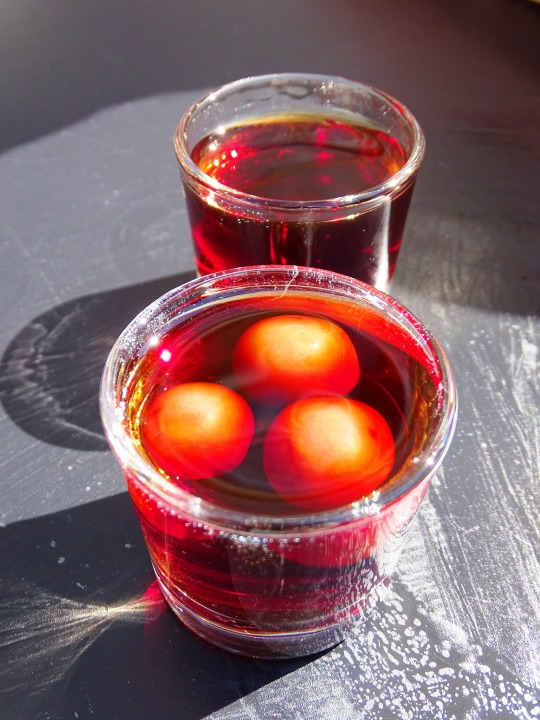

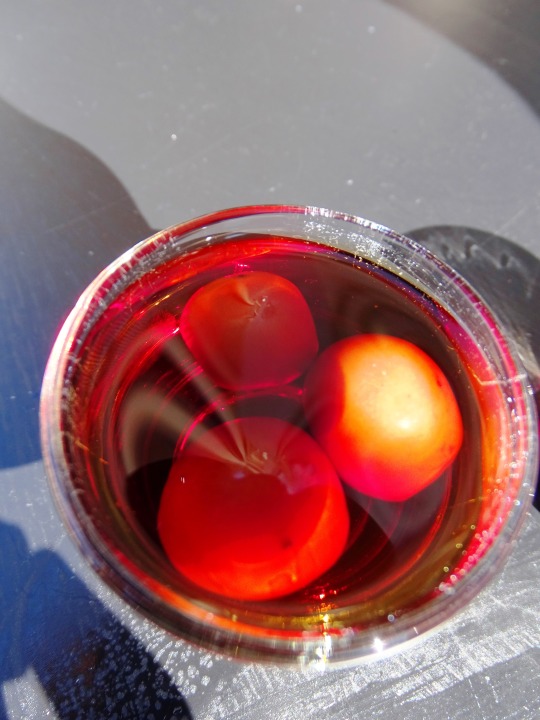
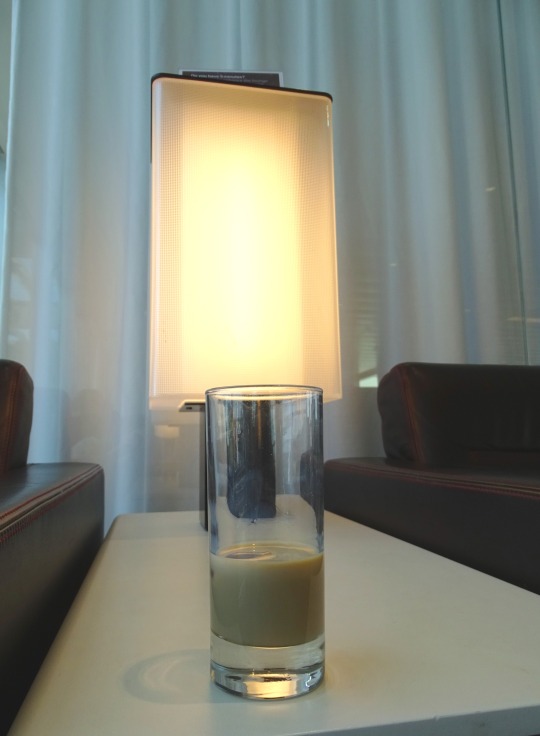
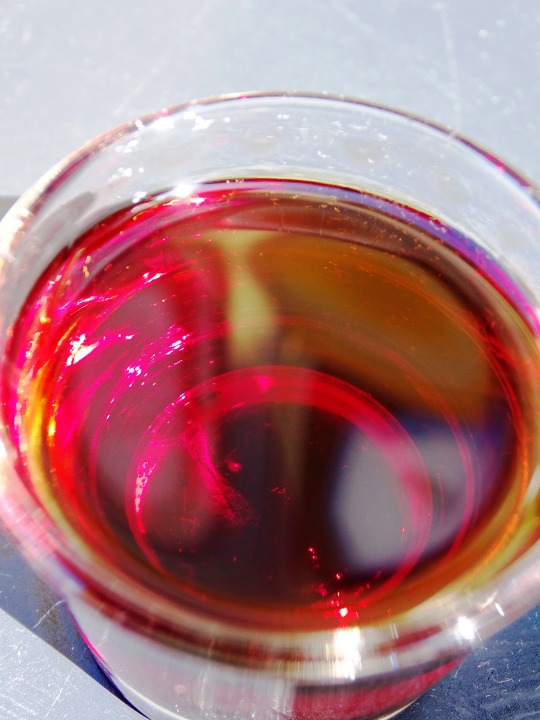

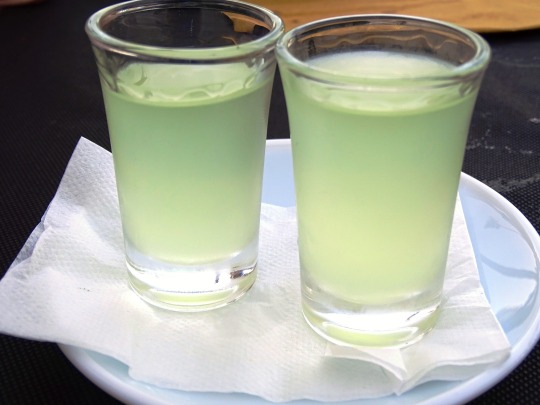
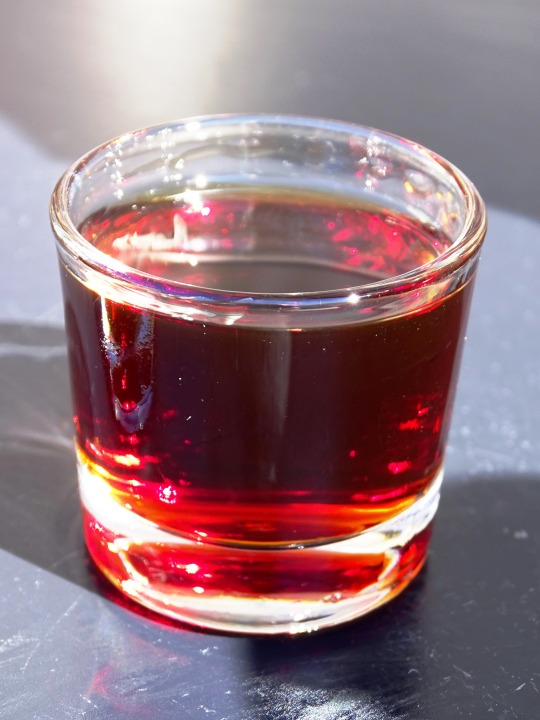

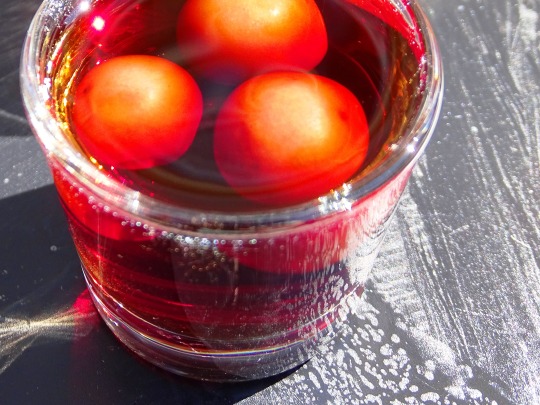
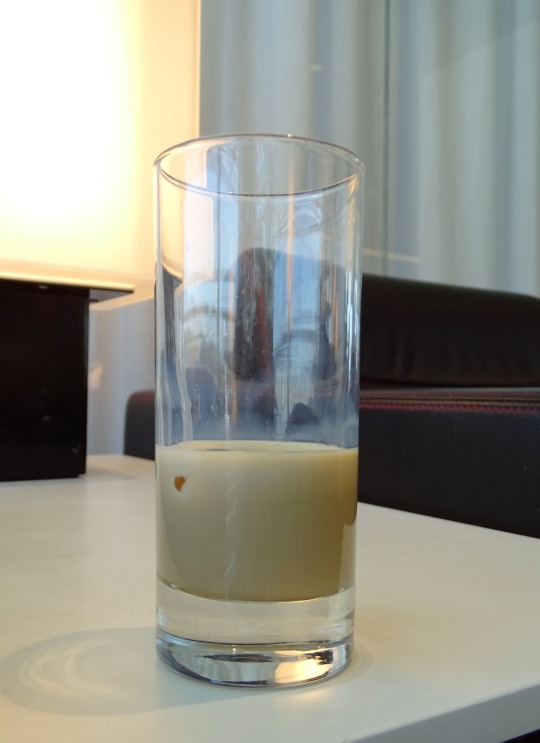


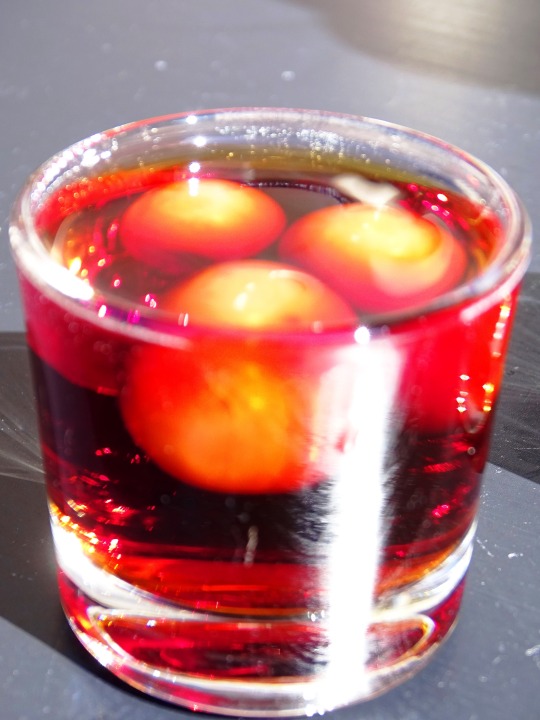
National Liqueur Day
Today we celebrate and imbibe liqueur, a distilled alcoholic beverage that is sweetened or blended with herbs, spices, flowers, nuts, cream, or fruits. The alcohol content of liqueur generally ranges from between 24 percent and 60 percent (48-120 U.S. proof) and is usually lower than that of liquor (spirits). Usually, the base spirit used to make liqueur is brandy. Liqueurs are not aged for very long, although their base spirit may be. But, there may be a resting stage to allow the flavors to blend together properly. In the United States, liqueurs are sometimes called cordials or schnapps. Technically, in the United States, the name schnapps only applies to brandies distilled from fermented fruits. Usually syrupy and sweet, liqueurs are used to make after-dinner drinks or are mixed with coffee. They may be drunk straight, poured over ice, or mixed. They are also commonly used to flavor desserts.
By 400 BC, fortified spirits were being made by the distillation of wine by the Egyptians and Greeks, who sweetened them with cinnamon and honey. These spirits were similar to today's liqueur and used ingredients that now are used to make mead. During the thirteenth century, European monks and alchemists improved upon the distillation process and created what we now would recognize as a liqueur. At the time it was mainly used for medical purposes. Today there are both generic liqueurs and proprietary liqueurs—those made by individual producers, often with a secret formula, with registered brand names. The following are some of the most common:
Generic:
Advocaat: cream liqueur.
Amaretto: almond flavor.
Apricot.
Crème d'ananas: flavored with pineapple.
Crème de cacao: flavored with cocoa and vanilla beans.
Crème de framboises: made with raspberries.
Crème de menthe: flavored with mint.
Crème de noyaux: almond-flavored; made with fruit pits; similar to amaretto.
Crème de violette: also known as parfait amour; contains oils from both violets and vanilla beans.
Kümmel: flavored with caraway seed.
Limoncello (Italy): lemon-flavored.
Sloe gin: flavored from the fruit of the blackthorn bush.
Triple sec: orange-flavored; colorless Curaçao.
Proprietary:
Baileys Irish Cream (Ireland): Irish whiskey and cream.
Bénédictine (France): first made in 1510; closely-guarded formula.
Campari (Italy): herbs and fruit.
Chartreuse (France): formula was developed in 1607; contains green and yellow plant liqueurs; spicy and aromatic flavors.
Cherry Heering (Denmark): cherry flavored.
Cointreau (France): proprietary blend of triple sec.
Crème Yvette (United States): violet flavor and color.
Curaçao: flavored from the dried peels of the green oranges from the island of Curaçao, located in the Caribbean Sea.
Danziger Goldwasser: spicy; contains tiny gold specks.
Drambuie (Britain/Scotland): Scotch whisky base; flavored with heather honey and herbs; made with a French formula that was brought to Scotland in 1745.
Forbidden Fruit (United States): brandy and grapefruit.
Grand Marnier (France): orange liqueur with cognac base; created in 1880; one of the most famous liqueurs of all time; Escoffier used it to make Crêpes Suzette; César Ritz was a fan of it and used it at his hotels.
Irish Mist (Ireland): made with Irish whiskey and honey; spicy.
Jägermeister (Germany).
Kahlúa (Mexico): coffee-flavored.
Liquore Galliano (Italy).
Midori (Japan): flavored with melon.
Sambuca (Italy): anise-flavored.
Strega (Italy).
Tia Maria (Jamaica): rum as base spirit; coffee-flavored.
Van der Hum (South Africa): spicy; aromatic.
How to Observe National Liqueur Day
Celebrate the day drinking liqueur. Use it to make an after-dinner drink, enjoy it straight, or pour it over ice. There are a countless amount of liqueurs and recipes that go with them that you could try. You could also use liqueurs to make a dessert. You could even use the day to learn how to make your own liqueurs. If you don't drink, you could still make or bake a dessert with liqueur for someone else, or try your hand at making homemade liqueur for a friend to try.
Source
#Fuzzy Navel#Baileys Irish Cream#National Liqueur Day#NationalLiqueurDay#16 October#Limoncello#Spain#Portugal#summer 2021#original photography#don't drink and drive#Ginjinha#Ginja#Ginjinha Espinheira#Lisbon#Mojácar#Lisboa#España#travel#vacation#tourist attraction#sour cherry#Southern Europe#Iberia#Canada#Switzerland
4 notes
·
View notes
Text
#tourisme#travel#travels#voyage#Portugal#Lisbonne#alentejo#Belém#Sintra#Ericeira#Monsaraz#Alfama#Alcobaça#Óbidos#Odeceixe#ginja#funiculaire#tram 28#fado#pastéis de nata#cascais#Estoril
0 notes
Photo
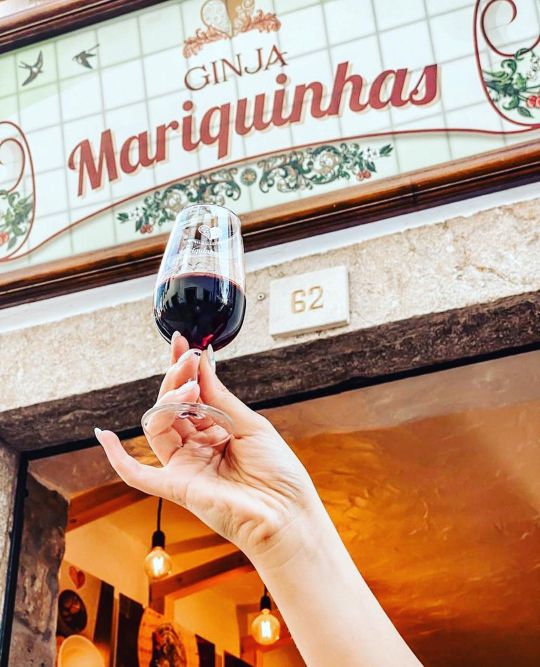
Ginja Mariquinhas is a traditional family liqueur with strong influences from the region of Óbidos where it is produced. Known as the best Ginja liqueur in Portugal, it is a 100% Natural drink with no dyes or preservatives and produced exclusively with IGP (Protected Geographical Indication) ginja fruits, which make its purity and flavor of much more quality. The “Mariquinhas” brand is inspired by Fado (traditional Portuguese music), as well as several other Portuguese elements such as Filigranas (gold or silver pieces made by hand) and Embroidery, which through their image convey the true Portuguese culture. 🍒🍒 Ginja Mariquinhas est une liqueur familiale traditionnelle avec de fortes influences de la région d'Óbidos où elle est produite. Connue comme la meilleure liqueur de Ginja au Portugal, c'est une boisson 100% naturelle sans colorants ni conservateurs et produite exclusivement avec des fruits de ginja IGP (Indication Géographique Protégée), ce qui rend sa pureté et sa saveur de bien plus de qualité. La marque "Mariquinhas" s'inspire du Fado (musique traditionnelle portugaise), ainsi que de plusieurs autres éléments portugais tels que les Filigranas (pièces en or ou en argent faites à la main) et la Broderie, qui à travers leur image véhiculent la véritable culture portugaise. #ginja #ginjadeóbidos #🍒 #🍒🍒 (at Óbidos, Portugal) https://www.instagram.com/p/Cp3XgqXLbhz/?igshid=NGJjMDIxMWI=
0 notes
Photo

Venham viver essa linda experiência ❤️ @ainatravelreceptivo Óbidos é um pequena e charmosa vila medieval localizada a 80 quilômetros de Lisboa. Durante cinco séculos o vilarejo fez parte do dote das rainhas portuguesas. O que Óbidos tinha de tão especial? Naquela época, eu não sei (hehe). Mas, hoje, posso dizer que a graça do vilarejo está nos detalhes: todas as construções são em branco com faixas coloridas, há flores nas janelas, um castelo de origem romana e uma muralha do século 14 que cerca toda a vila – e é possível caminhar sobre parte dela, um passeio que garante belas vistas. Isso sem falar nas lojinhas de artesanato e nas banquinhas de ginja, a tradicional bebida de Óbidos. #travel #visitportugal #portugal #portugallovers #portugalseulindo❤️ #winetour #enoturismo #espanha #spain #obidos #ginja #cidademedieval #reposter https://www.instagram.com/p/CoqKCEQJ--X/?igshid=NGJjMDIxMWI=
#travel#visitportugal#portugal#portugallovers#portugalseulindo❤️#winetour#enoturismo#espanha#spain#obidos#ginja#cidademedieval#reposter
1 note
·
View note
Text
Bom Apetite
Do we really want to travel in hermetically sealed popemobiles through the rural provinces of France, Mexico and the Far East, eating only in Hard Rock Cafes and McDonalds? Or do we want to eat without fear, tearing into the local stew, the humble taqueria’s mystery meat, the sincerely offered gift of a lightly grilled fish head? I know what I want. I want it all. I want to try everything…
#ALL the cheese#Azores#Berkeley Study Abroad#bolos lêvedos#bucket list#Café Central#Campo Pequeno#Cozido das Furnas#Furnas#ginja de Obidos#heatwave#I&039;d eat that on a pizza#last summer#Lisbon#more ice#my adventures#Pasteis de Nata#Ponta Delgada#Portugal#São Miguel#yum!
1 note
·
View note
Text

This is Bouganvillea from Obidos, Portugal. Basically Obidos is known for its Bouganvilleas and for Ginja, a liquor served in small chocolate cups. The streets are actually slippery with Ginja, be careful walking. Or the streets are slippery with tourists who drank too much Ginja.
#bouganvillea#photography#flower#flowers#original photographers#photographers on tumblr#red#tumblr#of#on#inner life of flowers
36 notes
·
View notes
Text
Some of the Batfam members if they were alcoholic drinks
Did somebody ask for this? Absolutely not, but I love drinking and I love the Bat-fam so:
Bruce Wayne as Amaro: It's a strong liquor, it tastes bitter, that's why it might be unlikeable to some people, but actually it has his benefits if taken after dinner, making you feel better after a long, stressful day.
Jason Todd as Absinthe: A spirit which is illegal in some countries due to his high alcohol content, if you're not careful, it can be fatal even after a few shots. It just reminds me of the brutal manners that Jason used to have in pre-52 as Red Hood. Reminds me also of the Painting "Absinthe" by Edgar Degas which represents my mood after reading UTRH.
Tim Drake as Midori: A really sweet and tasty liquor, not really strong, but quite unique considering his unusual colour, which reminds me of Tim as Robin in the early comics: someone who stands out with his optimistic personality and different backgrounds
Cassandra Cain as Wine: This one is personal, it's a drink that you can underestimate at first, but it's actually really strong, it's not a drink for getting drunk, it's something that you need to know to understand. It's also pretty versatile, based on the food you're eating or the event, you change the type of wine, similarly, Cassandra Cain adapts her fighting style based on her opponent
The other two that I don't want to explain too much:
Alfred as Rum: gives me old sophisticated man vibes
Stephanie Brown as Ginja/Ginjinha: idk funny drink
24 notes
·
View notes
Text
Sabem o que é pior nas manifestações de lisboa? É que independente do que estejam a manifestar, o povo vai todo à ginja. Não interessa que manif seja, a fila de ginja é interminável, e eu tenho sempre um grupo de 14 pessoas e fico sem saber o que fazer. Atraso me sempre meia hora a pala daquela merda porque está lá o povo todo com cartazes pelo meu direito a isto e aquilo mas também uma ginja. Como me estava a dizer o senhor Fernando hoje, QUE TRABALHA BA GINJINHA DO ROSSIO, "Ha manif? Paga a puta da ginja"
9 notes
·
View notes
Text
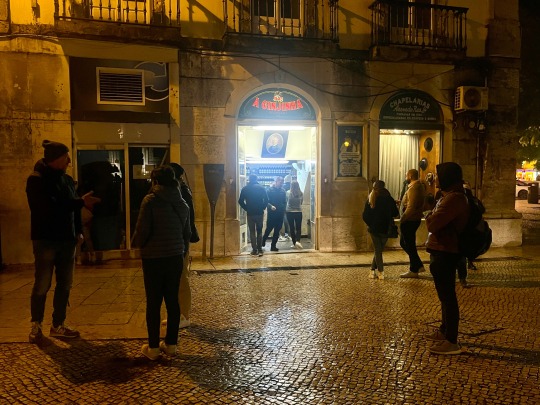
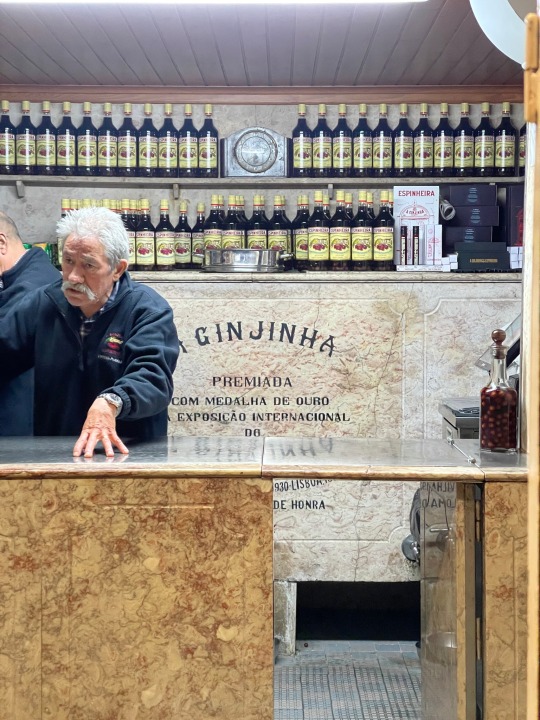
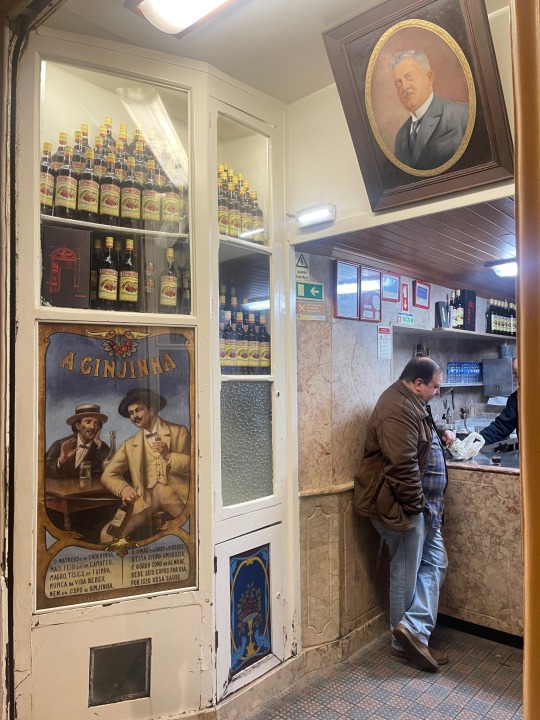
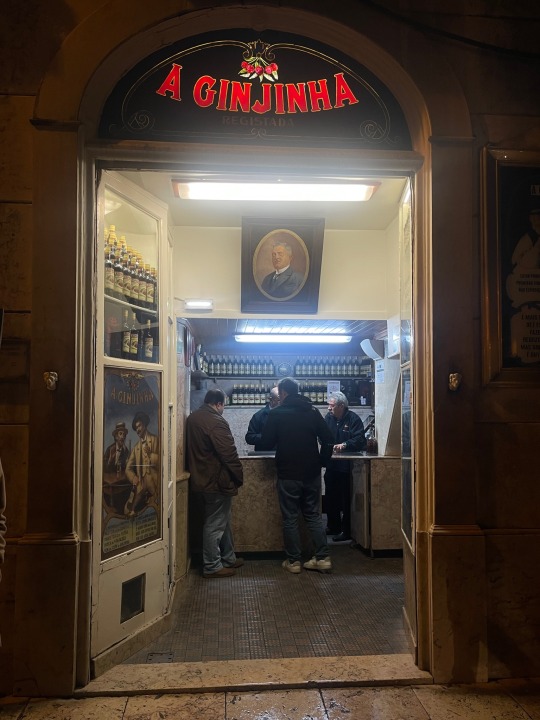
.
Ginjinha Espinheira, since 1840
One last shot of ginjinha, a strong cherry liqueur is served with or without the cherry, at the oldest still running ginjinha shop in Lisbon to wrap the day.
Ginjinha is a sour cherry liqueur which is made from steeping ginja berries (the Prunus cerasus austera, which is more commonly known as the sour cherry or the Morello cherry in English) in alcohol. Then, post-infusion, spices such as cinnamon and/ or cloves are added, as well as sugar. The resulting drink is around 18% proof, though some renditions are as high as 23%. The Serra da Estrela ginja (this peak being the highest mountain in continental Portugal) has protected status. Today, a staggering 150,000 litres of ginja are produced on a yearly basis, and around 90% of this is consumed within Portugal itself.
10 notes
·
View notes
Text


















National Liqueur Day
Today we celebrate and imbibe liqueur, a distilled alcoholic beverage that is sweetened or blended with herbs, spices, flowers, nuts, cream, or fruits. The alcohol content of liqueur generally ranges from between 24 percent and 60 percent (48-120 U.S. proof) and is usually lower than that of liquor (spirits). Usually, the base spirit used to make liqueur is brandy. Liqueurs are not aged for very long, although their base spirit may be. But, there may be a resting stage to allow the flavors to blend together properly. In the United States, liqueurs are sometimes called cordials or schnapps. Technically, in the United States, the name schnapps only applies to brandies distilled from fermented fruits. Usually syrupy and sweet, liqueurs are used to make after-dinner drinks or are mixed with coffee. They may be drunk straight, poured over ice, or mixed. They are also commonly used to flavor desserts.
By 400 BC, fortified spirits were being made by the distillation of wine by the Egyptians and Greeks, who sweetened them with cinnamon and honey. These spirits were similar to today's liqueur and used ingredients that now are used to make mead. During the thirteenth century, European monks and alchemists improved upon the distillation process and created what we now would recognize as a liqueur. At the time it was mainly used for medical purposes. Today there are both generic liqueurs and proprietary liqueurs—those made by individual producers, often with a secret formula, with registered brand names. The following are some of the most common:
Generic:
Advocaat: cream liqueur.
Amaretto: almond flavor.
Apricot.
Crème d'ananas: flavored with pineapple.
Crème de cacao: flavored with cocoa and vanilla beans.
Crème de framboises: made with raspberries.
Crème de menthe: flavored with mint.
Crème de noyaux: almond-flavored; made with fruit pits; similar to amaretto.
Crème de violette: also known as parfait amour; contains oils from both violets and vanilla beans.
Kümmel: flavored with caraway seed.
Limoncello (Italy): lemon-flavored.
Sloe gin: flavored from the fruit of the blackthorn bush.
Triple sec: orange-flavored; colorless Curaçao.
Proprietary:
Baileys Irish Cream (Ireland): Irish whiskey and cream.
Bénédictine (France): first made in 1510; closely-guarded formula.
Campari (Italy): herbs and fruit.
Chartreuse (France): formula was developed in 1607; contains green and yellow plant liqueurs; spicy and aromatic flavors.
Cherry Heering (Denmark): cherry flavored.
Cointreau (France): proprietary blend of triple sec.
Crème Yvette (United States): violet flavor and color.
Curaçao: flavored from the dried peels of the green oranges from the island of Curaçao, located in the Caribbean Sea.
Danziger Goldwasser: spicy; contains tiny gold specks.
Drambuie (Britain/Scotland): Scotch whisky base; flavored with heather honey and herbs; made with a French formula that was brought to Scotland in 1745.
Forbidden Fruit (United States): brandy and grapefruit.
Grand Marnier (France): orange liqueur with cognac base; created in 1880; one of the most famous liqueurs of all time; Escoffier used it to make Crêpes Suzette; César Ritz was a fan of it and used it at his hotels.
Irish Mist (Ireland): made with Irish whiskey and honey; spicy.
Jägermeister (Germany).
Kahlúa (Mexico): coffee-flavored.
Liquore Galliano (Italy).
Midori (Japan): flavored with melon.
Sambuca (Italy): anise-flavored.
Strega (Italy).
Tia Maria (Jamaica): rum as base spirit; coffee-flavored.
Van der Hum (South Africa): spicy; aromatic.
How to Observe National Liqueur Day
Celebrate the day drinking liqueur. Use it to make an after-dinner drink, enjoy it straight, or pour it over ice. There are a countless amount of liqueurs and recipes that go with them that you could try. You could also use liqueurs to make a dessert. You could even use the day to learn how to make your own liqueurs. If you don't drink, you could still make or bake a dessert with liqueur for someone else, or try your hand at making homemade liqueur for a friend to try.
Source
#Riverside Lemonade#Fuzzy Navel#Baileys Irish Cream#National Liqueur Day#NationalLiqueurDay#16 October#Limoncello#Spain#Portugal#summer 2021#original photography#don't drink and drive#Ginjinha#Ginja#Ginjinha Espinheira#Lisbon#Mojácar#Lisboa#España#travel#vacation#tourist attraction#sour cherry#Southern Europe#Iberia#Canada#Switzerland
1 note
·
View note
Text
⛔️ WARNING: this video is not for the faint of heart — so if you’re already hungry, AVERT YOUR EYES 👀 In all seriousness: when you visit Lisbon, you’re gonna wanna eat and drink these. 😄 Tag the person you'd like to enjoy them with! >> 🥮 Pastel de nata (i.e. egg custard tart): ideally taste-tested at the origin, @pasteisbelem, who have been making these famed pastries for nearly 200 years and are still serving them fresh daily. 🎣 Tinned fish & sardines: lots of great brands offer tinned fish, and some even ship overseas if you’d like to order some, but one good spot to try a variety is @portuguesesardine, which has a storefront at @lxfactory. 🍷Alllllllll the food at @timeoutmarketlisboa: seriously. This lively food hall, housed in a historic market building, offers a rich assortment food & drink, including local seafood, pastries, and wine. 🍒 Ginjinha: a tart, sweet Portuguese liqueur made from sour cherries (a.k.a. ginja berries), made even tastier when served in a small chocolate cup. BONUS RECS: 🍳 Brunch at @oninhocafebistro 🥪 Lunch at @sandwichclub.boubous
🍹 Cocktails at @monkeymash_lx
🦪 Fine dining at Michelin-rated @bou.bou.s
🍴 Food & drink from “quiosques” (i.e. the green kiosks) in city parks! These small outdoor cafes often serve food from high-end restaurants and hotels nearby, and even when they only offer what their own small kitchens can prepare, the atmosphere and atmosphere are often hard to beat.
Send this reel to the person you want to indulge with! • • • • • #lisboa #lisbon #portugal #familytravel #eurotrip #travelwithkids #europe #europa #traveleurope #lisbonne #lisbona #eurotour #visitportugal #visitlisbon #familytrip #girlslovetravel #travelfemme #glt #travelreel #travelfilm #beautifuldestinations #dreamdestinations #trending #foodie #foodporn #mixology #restaurantculture #finedining #michelin #baking #datenight
3 notes
·
View notes
Note
you got that ginja to you. you got that star. /p also i dont know the heck this means either

you also kinda got that vqnilla to you. You got that cloud.
3 notes
·
View notes
Text
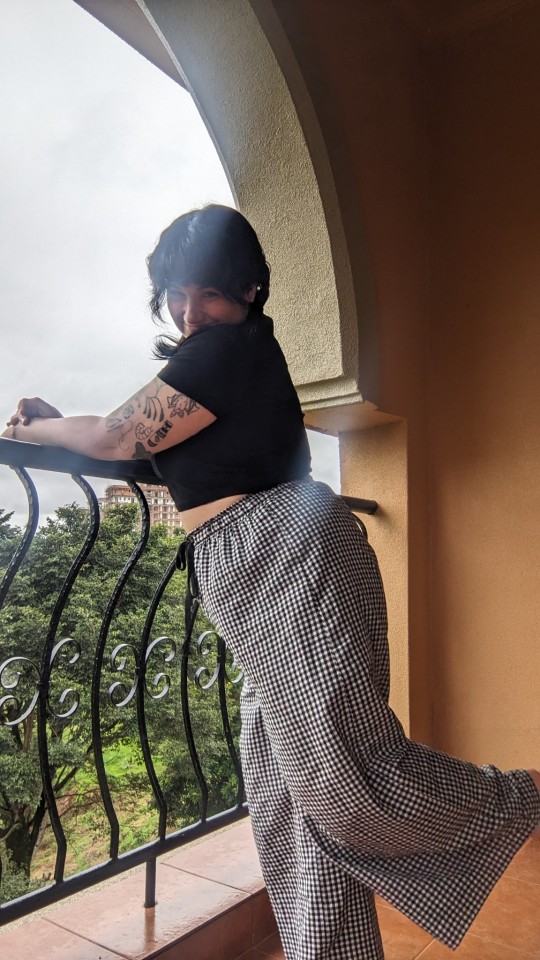
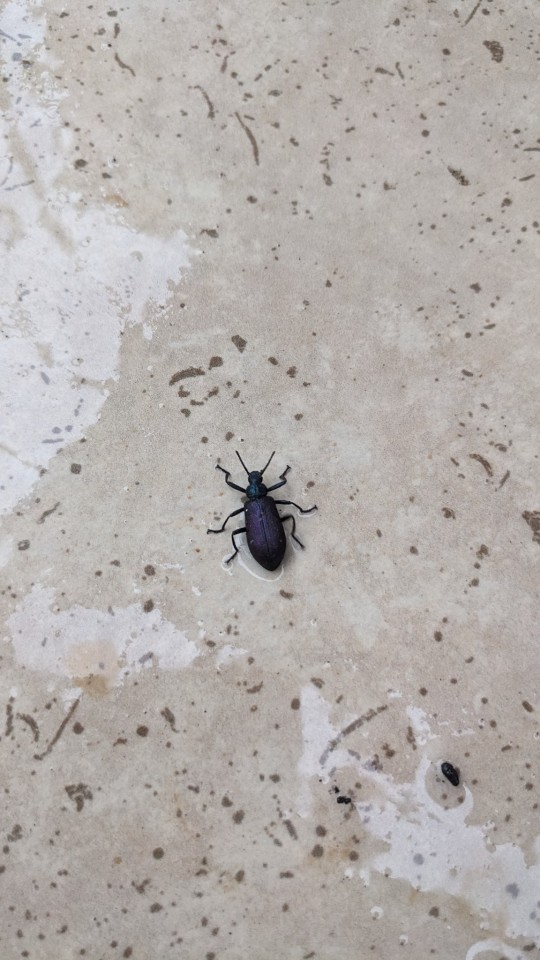

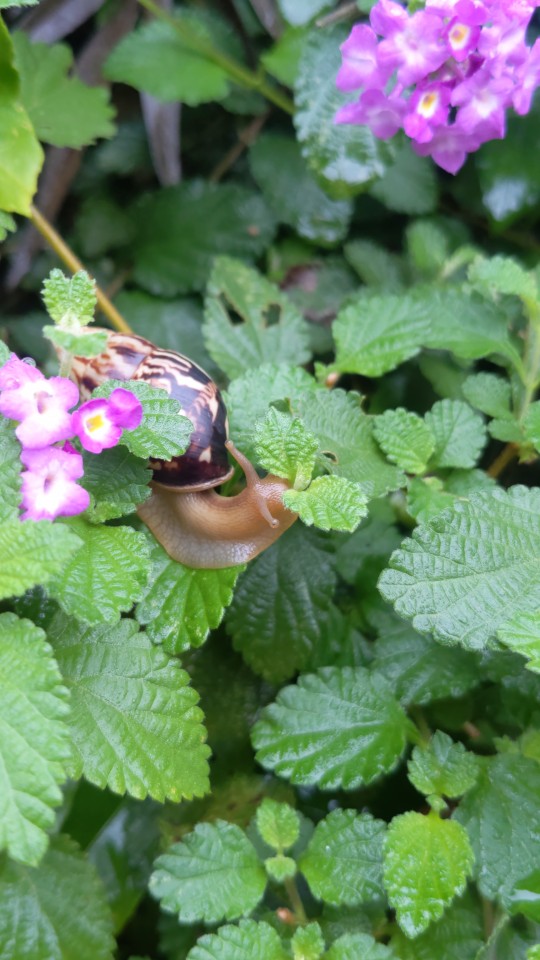

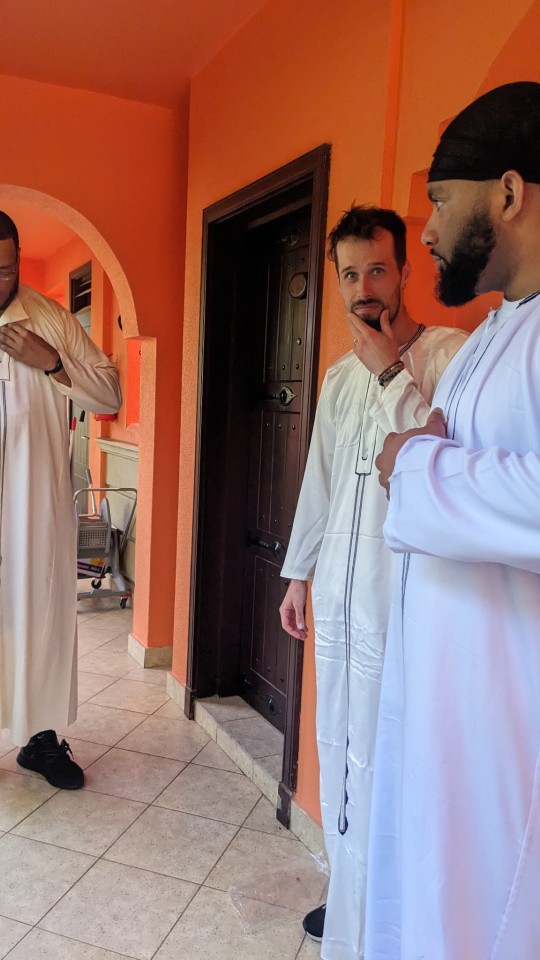




We have had sort of a strange day so far as I am starting time write this in the middle of the afternoon.
I struggled to sleep last night. When we finally got back to the room and showered and relaxed it was around 130. I fell asleep pretty easy but at 4am I got woken up by a noise and just never was able to fall back asleep. Which was fine for most of the morning. I would eventually take a nap and I am really tired now. But at the time I just could not fall asleep.
I would text with Celia and watch TikToks until James woke up at 6.
They did not feel well at all. And would throw up a few times. I felt so bad. But we would get cleaned up and dressed and I felt so cute. I messed up my lip from being dehydrated but I was just feeling so good about myself. And I tried to ride that as long as I could.
We would head to breakfast. Where James would have to run to the bathroom to throw up again. Their face was all flush like it gets when they get sick.
I was in a good mood though and tried to share that with them. It was raining just a little. And everything was beautiful. I had so much watermelon. And tried some bread pudding with pineapple and a berry called ginja berries. I also tried the line orange juice but I did not like it at all. Tasted like a grapefruit rind. James just ate fruit and drank water. They desperately wanted to go back to the room and lay down. But they also didn't want to rush me and I was like. Stop that let's go. And headed back to the room.
James would lay down and I would go hang out on the balcony. I watched videos and worked on bracelets. But I was restless. I wanted to go for a walk. And after I checked on James for a little I would go and do just that.
I walked as far as I could around the paths. I was listening to a podcast and just having a nice time looking at bugs and plants. But to many critters but so many good snails. I went past the basketball courts to the wedding amphitheater they have and when I started going up the hill I got stopped by security. Full ak47s slung on his chest. I called over to him when he saw me and let him know I was just taking pictures of flowers and would head back. He said j could take pictures from the hill but I didn't want to push my luck.
I would wander the other direction but eventually I wanted to go back to check on my husband.
They were still not amazing. And would sleep most of the morning away. I would hang out on the balcony and made bracelets and chilled. I had a snack and enjoyed the view. It's nice to just be relaxed. I still feel just a little guilty but I am supposed to be relaxing. I just also don't want to miss anything. The fomo is real even if there isn't anything to miss.
I would eventually get in bed with James. Who claimed to be feeling better but wanted to horizontal still. So I would join them and they would hold me and eventually I fell asleep.
When I woke up I actually didn't feel great anymore. My busted lip is sensitive. And I'm worried it's going to get worse and make me feel ugly. I am making sure to moisturize it and trying to not poke at it, as is my habit. I'll end up pulling at the skin and making it a million times worse. So I am trying very hard to not do that.
Eventually we started getting messages in the group chat. One of the guys who came in early this morning is trapped at immigration and they might deny his visa and everyone is pretty upset about this. Obviously! Like this poor guy traveled for two days! I really hope they can work it out. Apparently the embassy has been zero help.
We joined the bridal party at the bar. And got some food. The fries were very good but I was still feeling not my self. It got very warm out and while I love these pants they apparently don't breath super well. So I got a little overheated. I as not participating in the conversations much but I was enjoying listening.
Eventually the girls started to head to the rooms to get ready for Sam's bridal shower. So I came back to our room but the nice staff is cleaning it so I am sitting on the balcony until he is done.
It's been a lot of hours since then. I have to be chill about schedules changing all the time. But we still have not gone to the bridal shower and it was supposed to start 5 hours ago. So that's tough for me, when I love a schedule so much. But today was still fun.
Cleaning the room took longer then I expected and I was worried (unnecessary) about being late so I grabbed my clothes and went down to one of the I'm other girls rooms where the bridesmaids were getting their makeup done. And I would change in the bathroom.
I felt kind of off. Weird. But they gave me a piece of pizza and that would help. It was a very sweet tomato sauce but it was nice. I would hang out with them for a bit. But when I realized it was still going to be a while I would head back to find the boys.
They were outside trying on their traditional garb. And making sure things fit. After me and James would head to our room which was finished being cleaned and James would get dressed nice for pictures. I would change my hair and put on earrings and that helped. My lip was still bugging me but I have been babying it and trying very hard to not hurt it and make it worse.
Me and James would go to one of the boys rooms and we hung out there for a long time. There was some drama. One of the guys has been detained all day by immigration. They think because he has a Nigerian name and the agent thought he was arrogant for having an American passport and denied him. So we are not sure if he's going to get through. His visa is approved though and we have high hopes he will be released tomorrow when the embassy opens again. Hopefully they can help.
I had fun hanging out with the guys. Talking about conspiracies and listening to music. And eventually we were able to get their traditional outfits back from the tailor who was ironing them and I would help pin the bottoms and make sure things sweet laying right. It was nice to be helpful.
We headed to the wedding coliseum to do the pictures. And everyone looked so nice. The girls would come a few minutes after us. But they all looked so ridiculously beautiful. I got to learn all the names. The boys are wearing kunzu. The bride is wearing gomezi, and the girls are in mushanana. I spoke to the seamstress to get those. She was very kind.
Pictures took a while. And it was fun hanging out and seeing everyone look so good. And then Sam came down in her beautiful dress and I was just blown away. She looked like an angel.
(Omg we are in the van to the bridal shower and we got word that the friend who was detained has been released and is free after over 14 hours!! This is such a huge weight off of everyone.)
While we were doing pictures the sun started to set and it was just beautiful. And once the sun was down the moon started to create over the mountains. I got everyone's attention to watch it and it was just so magical. We are all just so happy and having so much fun.
Once photos were done we would all take an hour to reset. The wedding party changed into more comfortable clothes. And we would meet back at 830. 6 and a half hours later then planned but it's fine.
Me and James got back to the room and the staff came back in to make our beds again for sleep. So there is a way they set the room for the day and a way they do it for the night so that's interesting. The man was nice. And me and James chilled on the couch
A little after 8 we went to the lobby and waited. And soon everyone else was gathered and we got on the bus. And that's where I am not. I'm looking forward to the evening even though I am pretty tired. It's fun seeing everyone on their motorcycles.
It's been a few hours now and the party is in full swing. I am thoroughly enjoying talking to Sam's cousins from London. And the food tonight is really good. I am really tired but I'm having a lot of fun.
I am going to go and continue to have some fun. To be a part of the festivities I have taken shots of fruit juice for fun.
I hope tomorrow we can swim. I am looking forward to another day!
Goodnight everyone!!
2 notes
·
View notes
Note
not a confession but i need help w finding two wc-related videos if anyone can help!!
one of them is an unfinished ashfur amv to the song tear you apart by she wants revenge (NOT the one by lockandkeyhyena). it was fully animated up until halfway through the video where it became more of an animatic and iirc it was set to the full song
the other one was a REALLY old vid idk if anyone would remember it. it was during the ginjaninjaowo vs wyethcat race to 9,000 subs time and was a full animation set to bleeding out by imagine dragons. there was a scene where ginja was cornered by dogs and wyeth saved them
^^^
18 notes
·
View notes
Note
do u think the order in which u spell "They Might Be Giants" in an acronym matters? tgbm... tmgb... tbgm... mtgb
The Giant Ballistic Missile
The Mountain Goats, Bro
Teenage Butant Ginja Murtles
Magic The Gathering, Bro
6 notes
·
View notes